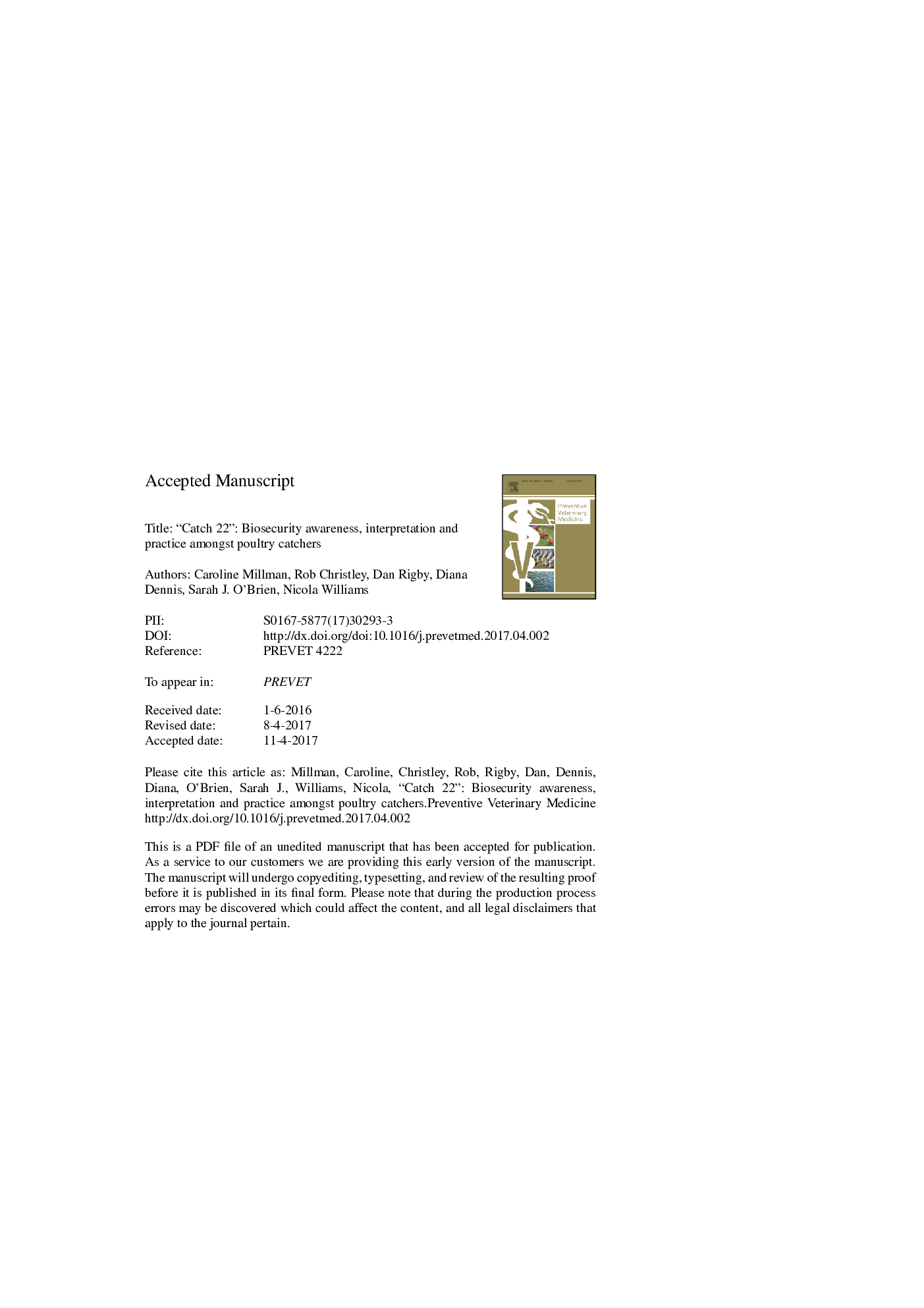| Article ID | Journal | Published Year | Pages | File Type |
|---|---|---|---|---|
| 5543772 | Preventive Veterinary Medicine | 2017 | 32 Pages |
Abstract
All of the catchers who took part in the Watch-&-Click study identified at least one of the biosecurity threats with 40% detecting all of the hazards. Those who had undergone training were significantly more likely to identify specific biosecurity threats and have a higher awareness score overall (48% compared to 9%, p = 0.03). Crucially, the individual and group interviews revealed the tensions between the high levels of biosecurity awareness evident from the survey and the reality of the routine practice of catching and thinning. Time pressures and a lack of equipment rather than a lack of knowledge appear a more fundamental cause of catcher-related biosecurity lapses. Our results reveal that catchers find themselves in a 'catch-22Ⲡsituation in which mutually conflicting circumstances prevent simultaneous completion of their job and compliance with biosecurity standards.3 Hence, although education about, and enforcement of, biosecurity protocols has been recommended, our findings suggest that further reforms, including changing the context in which catching occurs by improving the equipment and other resources available to catchers and providing more time for biosecurity, will be essential for successful implementation of existing biosecurity protocols.
Related Topics
Life Sciences
Agricultural and Biological Sciences
Animal Science and Zoology
Authors
Caroline Millman, Rob Christley, Dan Rigby, Diana Dennis, Sarah J. O'Brien, Nicola Williams,
